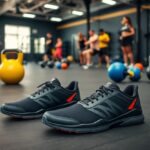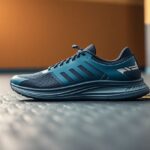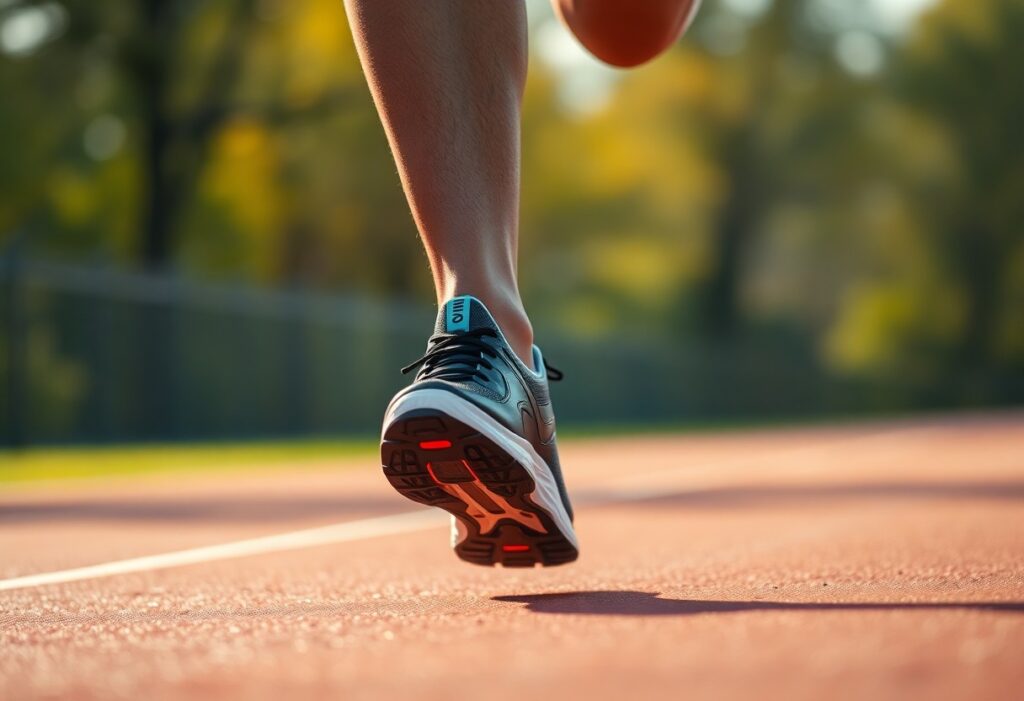
Discover the remarkable innovations in running footwear technology that have significantly transformed the way endurance athletes optimise their performance and achieve their goals.
The realm of performance optimisation in endurance running has undergone a profound transformation, thanks to advanced footwear technology. These innovations provide athletes with unparalleled opportunities to unlock their full potential. You'll learn how state-of-the-art shoe designs can substantially lower your metabolic expenditure while enhancing your running economy. By incorporating carbon fibre plates and pioneering midsole materials, these shoes boast exceptional energy return mechanisms that may reduce your oxygen consumption by as much as 4%. Whether you are a seasoned professional or a passionate amateur, grasping these biomechanical advancements will empower you to make informed choices regarding your running gear and potentially enhance your race performance.
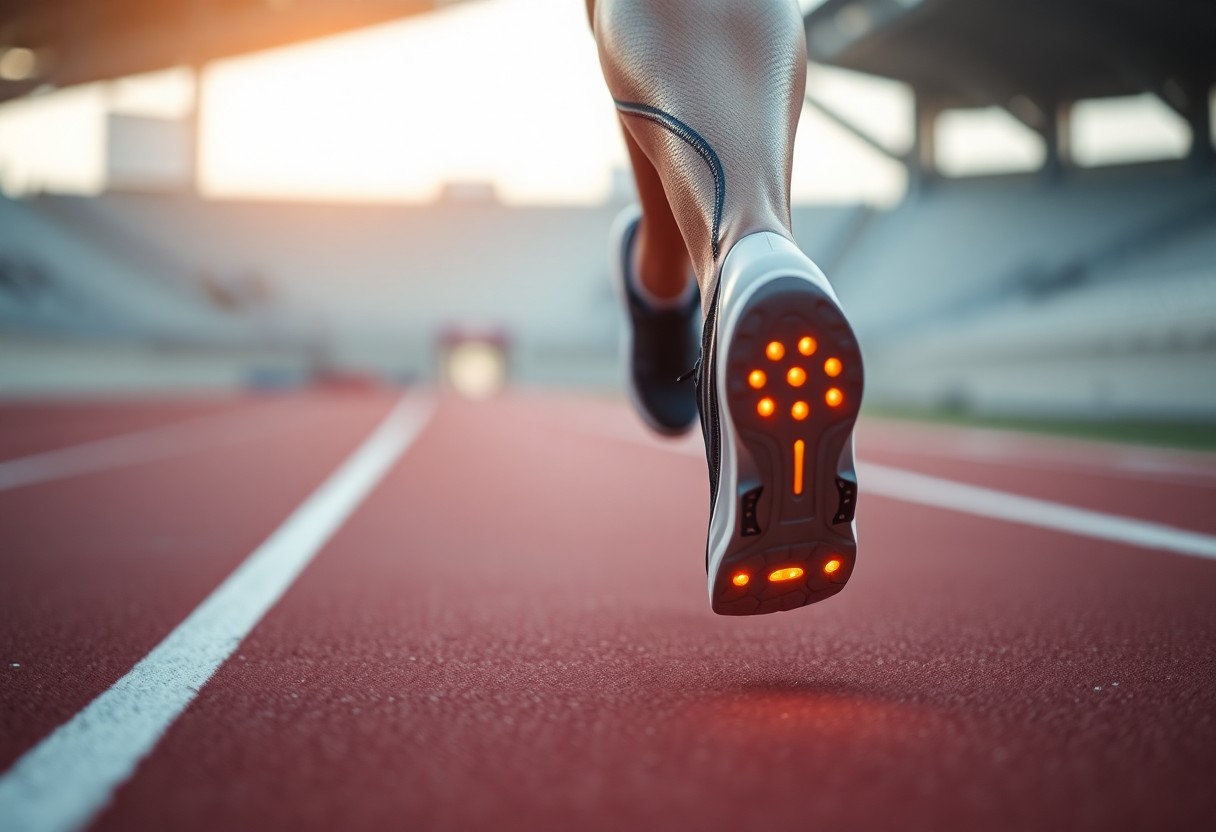 Continue reading to delve deeper into the intricate mechanics of running footwear that promise to amplify your performance:
Continue reading to delve deeper into the intricate mechanics of running footwear that promise to amplify your performance:
Unlocking the Mechanics of Energy Return in Advanced Running Shoes
The technology behind modern running shoes utilises complex biomechanical principles to revolutionise energy transfer during running. Innovative design elements work in harmony to reduce metabolic expenditure, forming a sophisticated system that enhances running efficiency through advanced material engineering and geometric design. By focusing on the mechanics of energy return, these shoes give runners a significant edge in both performance and stamina, enabling longer runs while effectively minimising fatigue.
How Carbon Fibre Plates Enhance Energy Efficiency in Running
Carbon fibre plates harness precise geometric engineering to redirect kinetic energy throughout the running motion. Optimal curvature angles ranging from 12° to 15° enable maximum energy storage and return, with finite element modelling demonstrating energy return efficiencies of up to 93% in prototype designs. These engineered plates function as a spring mechanism, reducing muscular effort during toe-off phases, thus allowing runners to conserve energy over extended distances, ultimately leading to improved endurance and performance.
Evaluating the Advantages of TPU Over EVA in Midsole Technology
The choice of materials profoundly impacts the performance of running shoes, with thermoplastic polyurethane (TPU) emerging as a superior midsole option. Comparative studies highlight TPU’s notable advantages in terms of energy return and impact absorption, offering runners enhanced biomechanical efficiency across various running conditions. The decision between TPU and EVA foam is vital for athletes seeking to optimise their performance and reduce the risk of injuries during both training and competition.
| Energy Return | 18% higher in TPU |
| Oxygen Consumption Reduction | 2.4% lower with TPU |
A comprehensive examination of midsole materials reveals intricate performance characteristics. TPU exhibits superior resilience compared to traditional EVA foam, maintaining consistent mechanical properties even after thousands of compression cycles. Runners benefit from more reliable energy return, diminished fatigue, and enhanced long-distance performance through cutting-edge material science innovations. This can significantly influence their overall training outcomes and competition results.
| Impact Absorption | TPU absorbs 37% more force |
| Rebound Elasticity | 89% maintained across 50,000 cycles |
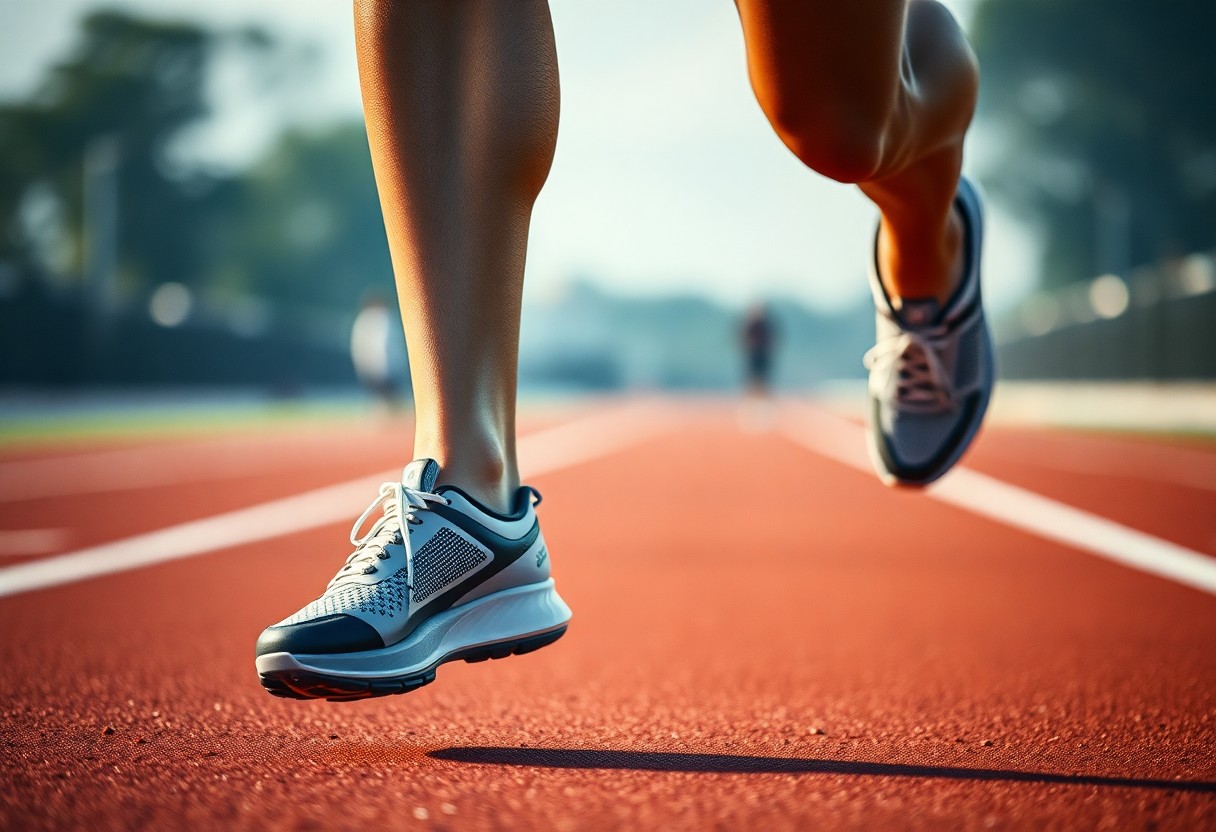 Explore further as we examine the implications of advanced footwear technology on metabolic efficiency:
Explore further as we examine the implications of advanced footwear technology on metabolic efficiency:
Who Profits Most from Advanced Footwear Technology? An Analysis of Metabolic Efficiency
The impact of advanced footwear technology varies among runners. Gains in metabolic efficiency are significantly influenced by demographic factors, including gender, age, and individual biomechanics. Research has unveiled intricate patterns of metabolic response, demonstrating that the advantages of super shoes extend beyond basic performance metrics to encompass complex physiological adaptations unique to each runner's biomechanical profile.
How Gender Influences Performance Enhancements in Running
Female runners achieve a 3.2% improvement in metabolic power compared to a 4.2% enhancement observed in male runners, indicating complex neuromuscular adaptations. Data on pelvic kinematics shows a 14% greater reduction in hip adduction angles for females utilising advanced footwear, which may elucidate the subtle differences in metabolic benefits observed between genders. Understanding these distinctions is crucial for tailoring training and footwear selections to maximise performance advantages for each gender.
Assessing Age-Related Benefits in Endurance Performance
Masters athletes aged 40 and above demonstrate a 2.8% reduction in oxygen cost when employing super shoes, likely counterbalancing decreased tendon elasticity. Tibial loading analyses indicate a 12% cumulative stress reduction per kilometre in older runners, suggesting significant benefits in injury prevention and performance maintenance. These insights underscore the importance of advanced footwear technology in prolonging the competitive careers of older athletes.
The benefits of advanced footwear technology related to age extend well beyond simple performance metrics. Biomechanical studies indicate that older runners experience more substantial adaptations due to compensatory mechanisms. Decreased tendon stiffness and altered muscle recruitment patterns interact with shoe technology to create a distinctive performance enhancement profile. Specifically, the energy return mechanisms of carbon plates appear to counteract age-related biomechanical inefficiencies, potentially prolonging competitive running careers by alleviating the physiological constraints typically faced by older athletes.
Continue reading to discover more about the implications of advanced footwear technology on injury risks:
How Does Running Footwear Influence Injury Risk?
The introduction of advanced footwear technology creates intricate biomechanical interactions that necessitate a detailed examination of potential injury risks. Runners should carefully evaluate the balance between performance enhancement and physiological adaptation. Longitudinal research has revealed subtle but significant alterations in muscular recruitment patterns, joint loading, and proprioceptive feedback when transitioning to high-performance running shoes, highlighting the importance of a measured approach to training and recovery.
Injury Analysis: Evaluating the Trade-offs of Enhanced Performance
Biomechanical studies reveal a 9% increase in strain rates on the Achilles tendon among users of super shoes during high-intensity training. Plantar pressure mapping indicates 22% greater forefoot loading compared to conventional trainers, particularly when navigating challenging terrains such as downhill running. These findings imply that while metabolic efficiency improves, runners must implement targeted strength and adaptation protocols to mitigate potential injury risks and safeguard their long-term athletic health.
How to Adjust Training Protocols for Optimal Gait Adaptations
Your biomechanical response to advanced footwear necessitates strategic adjustments in your training regimen. Gait retraining is essential to optimise the unique energy return mechanisms associated with carbon-plated shoes. Runners should concentrate on developing neuromuscular patterns that align with the shoe’s biomechanical design, thus potentially reducing injury risks and maximising performance benefits.
A comprehensive approach to gait adaptation requires multifaceted strategies to effectively integrate advanced footwear technology. Biomechanical analysis indicates that runners typically need around 6 to 8 weeks of progressive training to fully adapt to the distinctive mechanical properties of super shoes. This adaptation period should involve targeted eccentric strengthening exercises, modified interval training methods, and meticulous monitoring of lower limb biomechanics. Professional athletes and serious runners stand to benefit significantly from periodic 3D gait analysis to track subtle shifts in their movement patterns, thereby ensuring optimal integration of advanced footwear technology with their individual biomechanical characteristics.
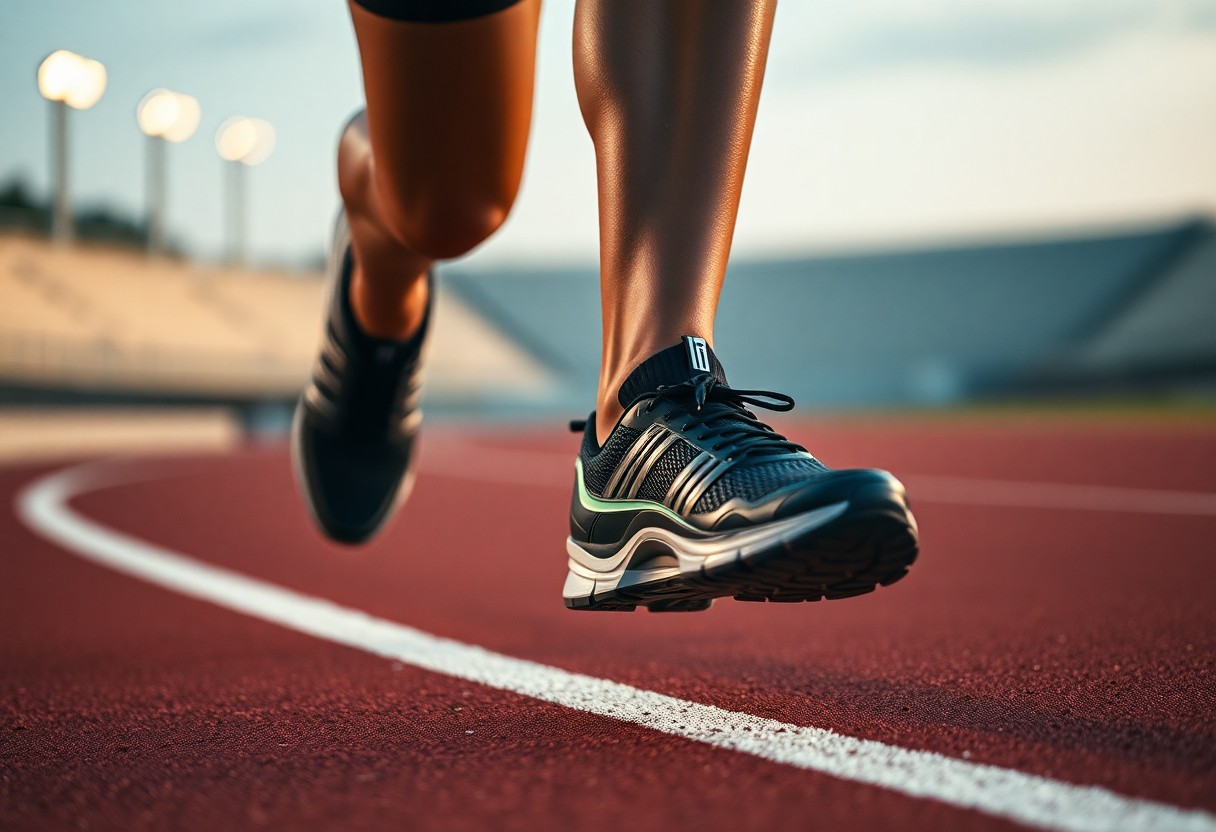 Explore the future of running footwear technology and what it means for runners:
Explore the future of running footwear technology and what it means for runners:
Envisioning Future Innovations in Running Footwear Technology
Emerging technologies are set to revolutionise the design of running shoes, pushing the limits of biomechanical efficiency and performance optimisation. Cutting-edge research is focused on personalised solutions that adapt to individual biomechanics, utilising advanced materials, computational modelling, and integrated sensor technologies to develop a new generation of intelligent footwear designed specifically for elite athletes.
Transforming Footwear Design with 3D Printed Midsoles
Optimisation algorithms for lattice structures now allow for precise variations in stiffness that align with individual foot pressure maps. Prototype testing has indicated metabolic savings of 5.1% more compared to mass-produced models, with computational design facilitating unprecedented customisation of midsole geometries to maximise energy return and minimise biomechanical stress. This innovative approach ensures that every runner can achieve optimal performance tailored to their specific physical attributes.
Integrating Smart Technology for Enhanced Performance Tracking
New sensor technologies are evolving running shoes into sophisticated performance monitoring devices. Real-time ground reaction force feedback systems can lead to a 1.9% reduction in oxygen cost by enabling micro-adjustments in cadence, providing runners with immediate biomechanical feedback during both training and competitive settings. These advancements are essential for athletes striving to fine-tune their techniques and performance metrics.
Advanced sensor integration signifies a remarkable advancement in performance monitoring technology. Multi-axis accelerometers, pressure-sensitive matrices, and embedded microprocessors now capture intricate biomechanical data with outstanding accuracy. These intelligent systems analyse gait mechanics, impact forces, and energy expenditure in real-time, supplying runners with detailed insights into their movement patterns. Machine learning algorithms can now predict potential injury risks, optimise training loads, and recommend personalised technique adjustments based on extensive movement analyses, effectively transforming running shoes from passive equipment into active performance optimisation tools.
Finally, deepen your understanding of the transformative nature of advanced footwear technology within endurance running:
Embracing Tomorrow's Advanced Footwear Technology
In summary, you have explored the transformative nature of advanced footwear technology in endurance running. Your insights now encompass how innovative design elements such as carbon plates and high-performance midsole materials can significantly lower metabolic costs while enhancing running efficiency. By harnessing scientific knowledge, you can appreciate that these shoes offer much more than marginal gains—they signify a paradigm shift in athletic performance. Your investment in such technology could lead to improved running economy, reduced energy expenditure, and optimised biomechanical responses across a diverse array of athletic demographics.
The Article Biomechanical Efficiency of Advanced Footwear Technology: Metabolic Cost Reduction and Performance Enhancement in Endurance Running appeared first on My Shoes Finder.
The Article Biomechanical Efficiency in Advanced Footwear for Runners Was Found On https://limitsofstrategy.com

